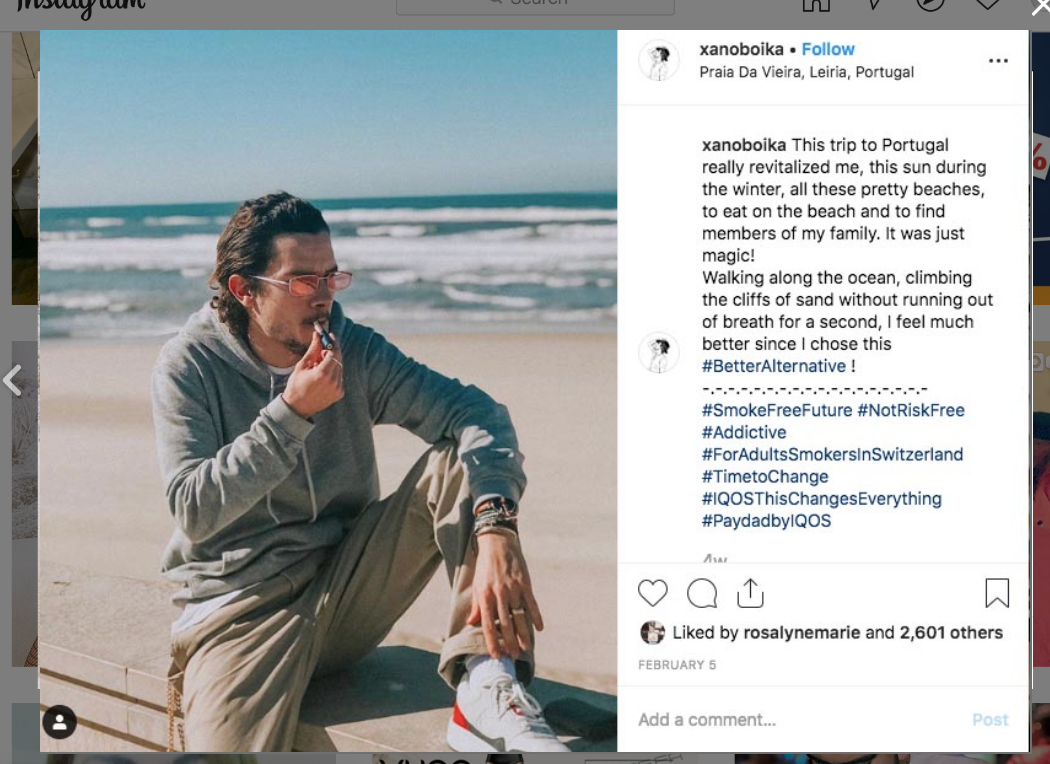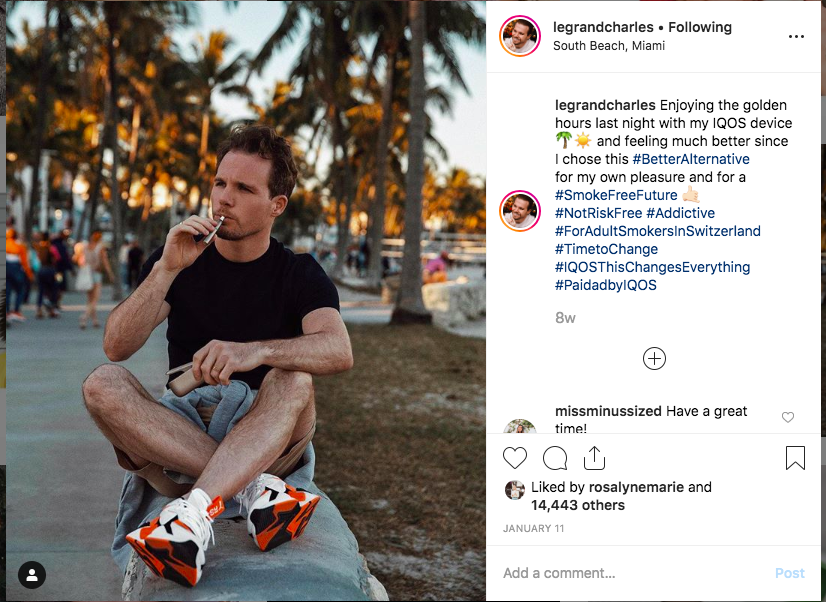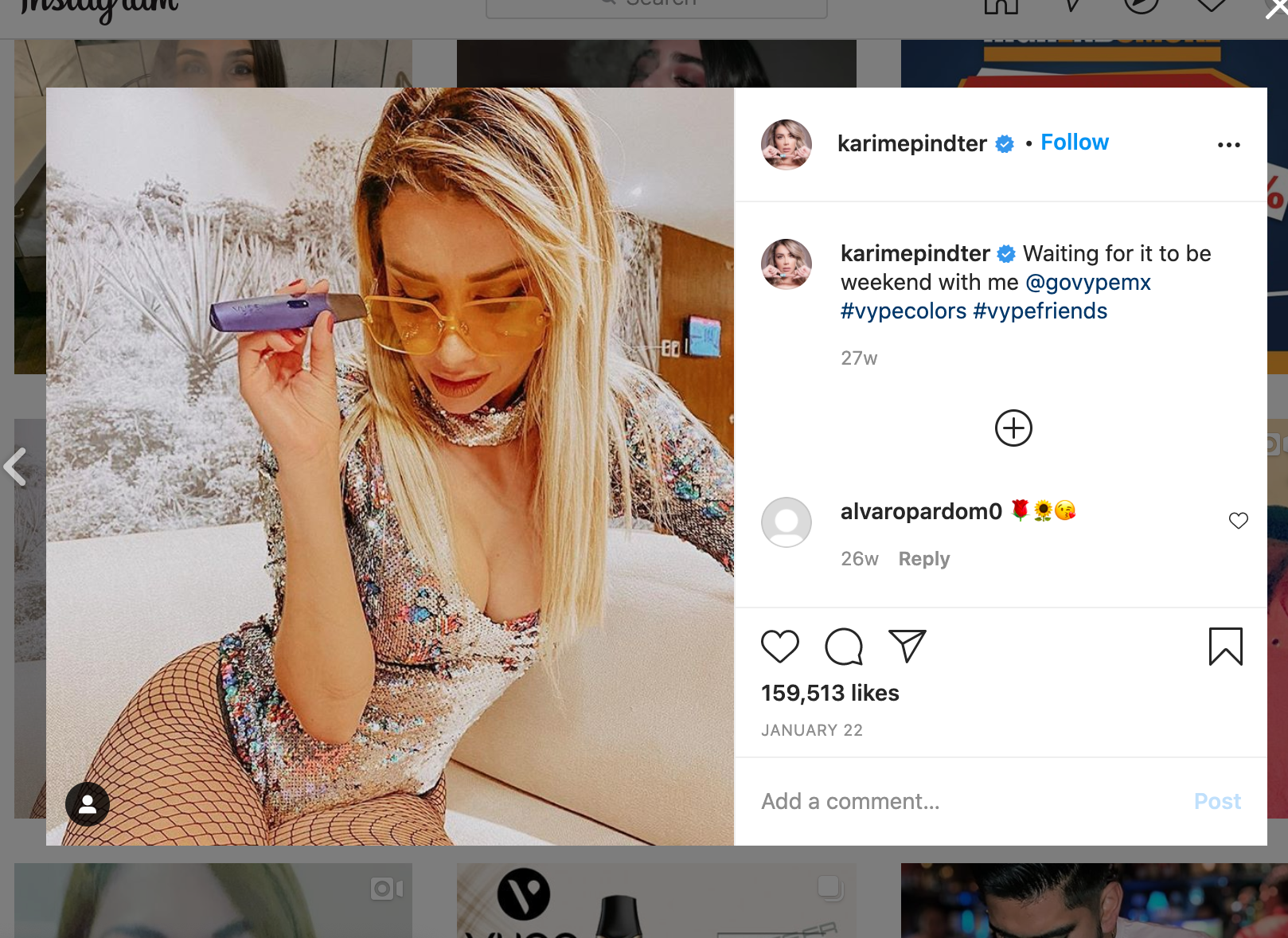Protect Young Audiences from Big Tobacco’s Predatory Advertising
Tobacco companies are violating Facebook and Instagram’s ban on tobacco and e-cigarette marketing
Help enforce Facebook & Instagram’s policy and protect youth online

When Facebook and Instagram prohibited tobacco companies from paying to place ads on their platform, tobacco companies turned to young influencers to covertly promote cigarettes, e-cigarettes, heated cigarettes, and oral nicotine products.
Following exposés revealing tobacco companies were using influencers to market their products to youth on social media, Facebook adopted a new policy in 2020 prohibiting influencer marketing of tobacco and e-cigarettes. But tobacco companies are using deceptive tactics to make it difficult for Facebook and Instagram to enforce their policy, allowing them to continue to market dangerous tobacco and nicotine products to young audiences.
How to report a violation to Facebook and Instagram
Facebook and Instagram posts both have options to report content in violation of their policies which includes posts that market tobacco products and e-cigarettes. Check out the videos below to learn how to report content in violation of each platform’s policy.
“Branded Content” policy bans tobacco and e-cigarette marketing
Influencers working with companies to promote products on Facebook/Instagram must follow the “Branded Content” policy
Facebook defines “branded content” as “a creator or publisher’s content that features or is influenced by a business partner for an exchange of value, such as monetary payment or free gifts.” Branded content prohibited from being published on Facebook/Instagram includes: “Tobacco products, vaporizers, electronic cigarettes, or any other products that simulate smoking.”
Tobacco companies use deceptive advertising tactics
Find out how to spot tobacco & e-cigarette ads banned on Facebook and Instagram
Influencer ads for e-cigarettes and tobacco products are most often designed to look like natural posts any of us would post for our friends on social media, which helps normalize tobacco and e-cigarette use and evade Facebook/Instagram’s rules. But there are a few features that help identify these posts as ads:
Hashtags
Hashtags may include the name of the product, marketing phrases, and/or even note sponsorship (such as #ad, #sponsored).
Image or name of product
The product or branding for the product is usually visible in the post.
Substantial number of "likes"
Influencers tend to have many followers which helps tobacco companies spread these ads.

